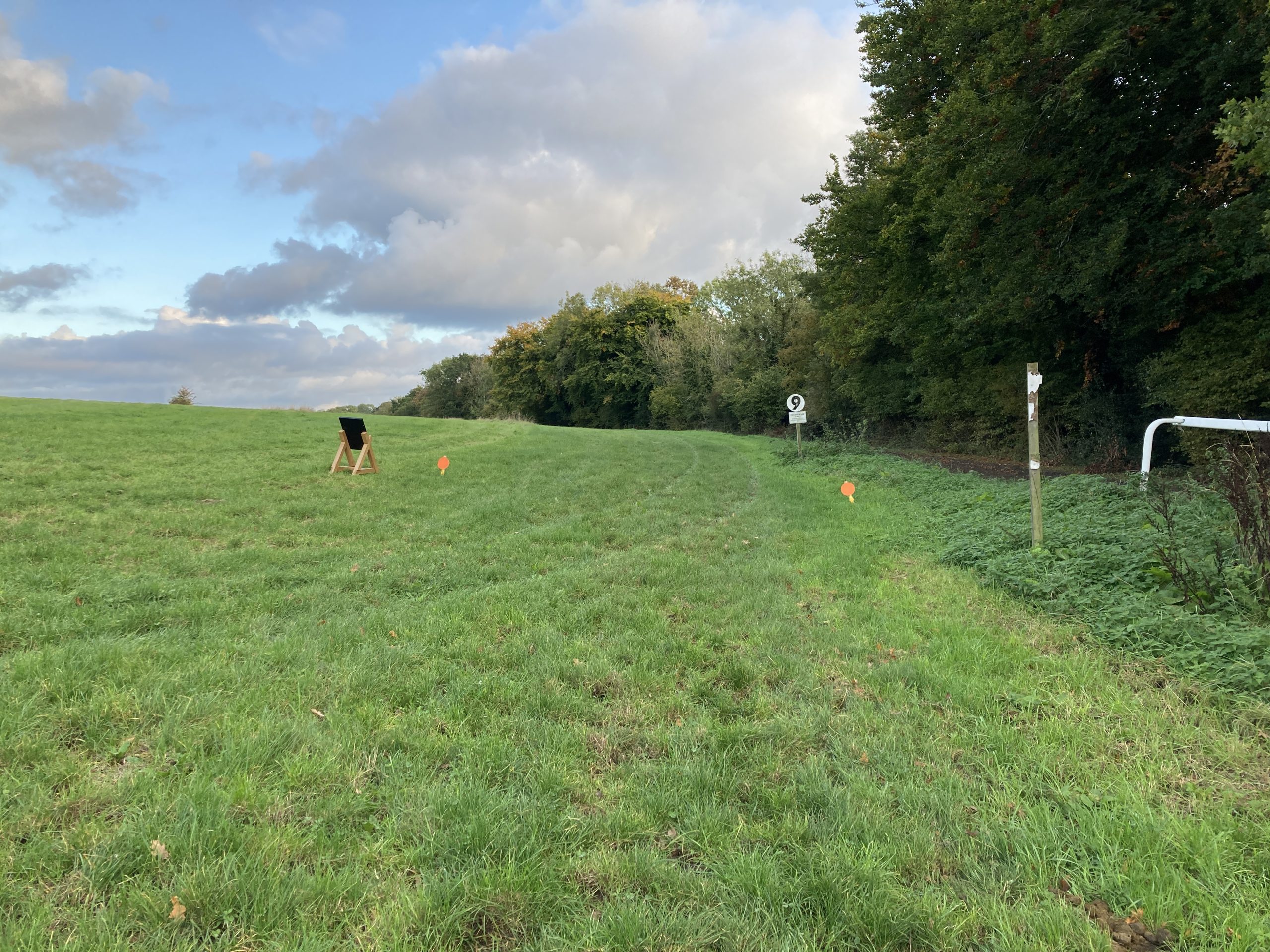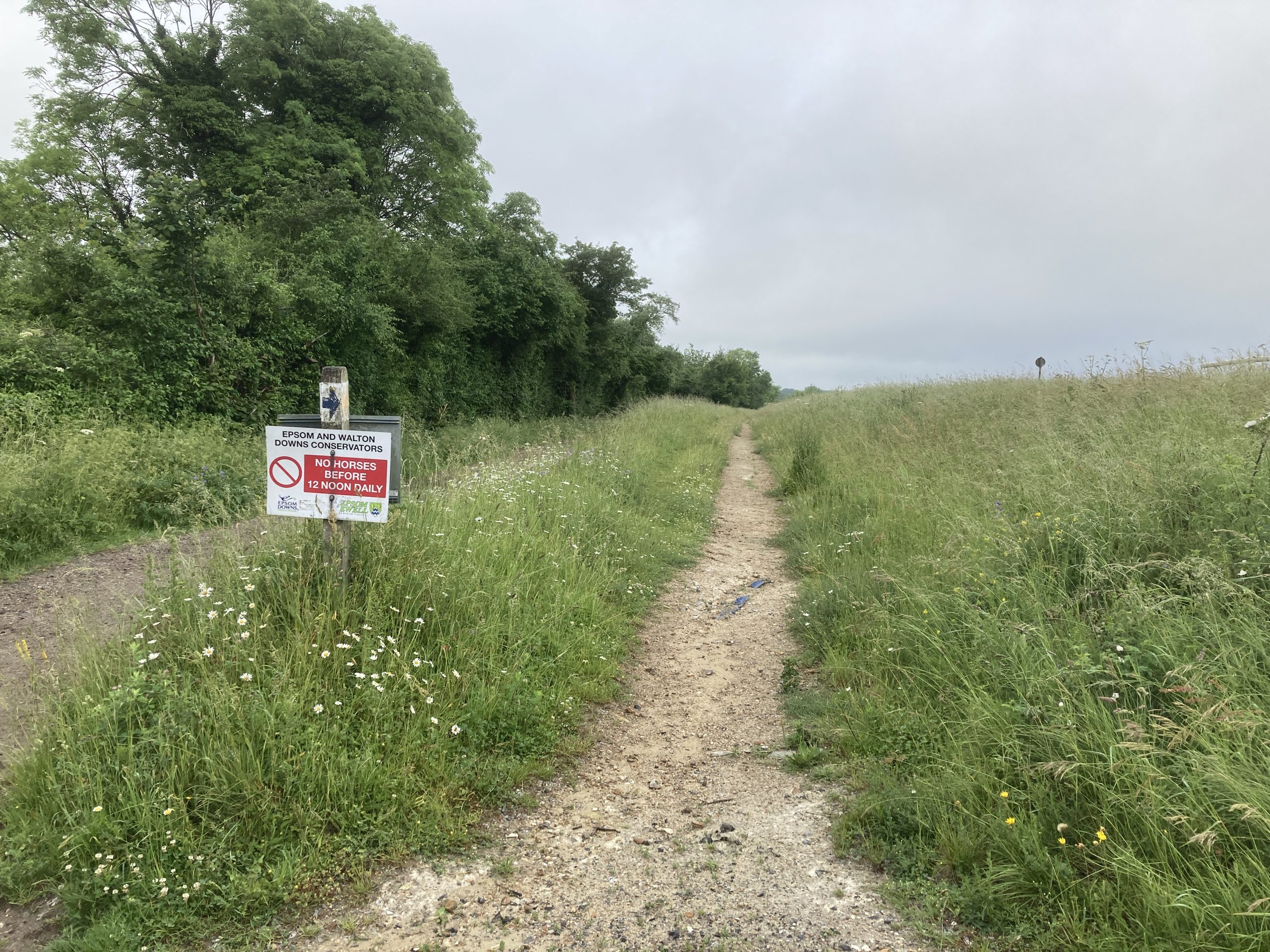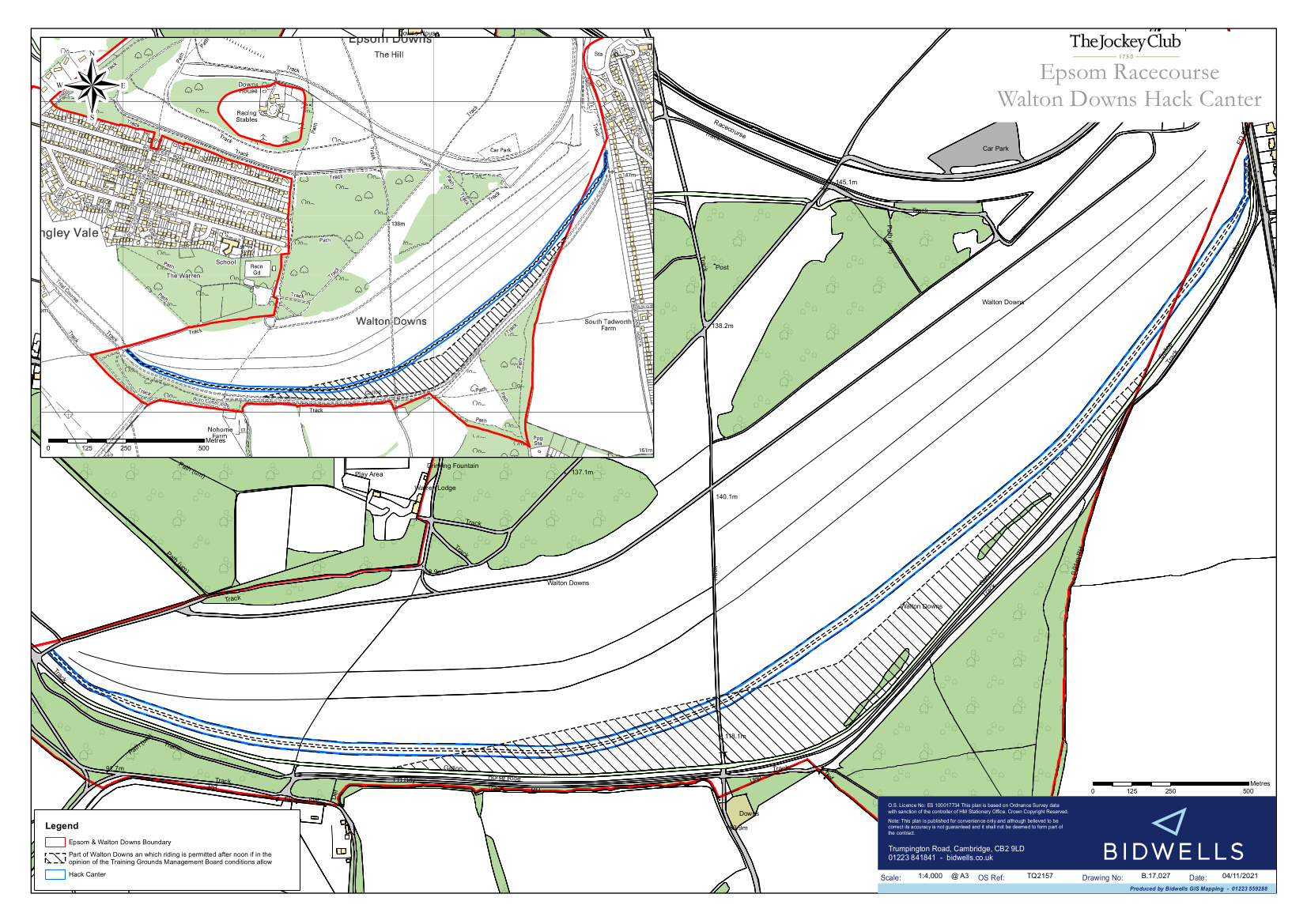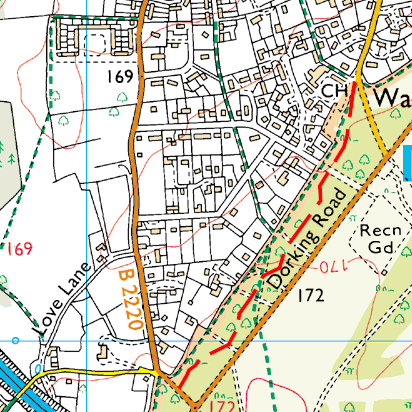
At the foot of Walton Downs (also known as Six Mile Hill), there is a sand track — it’s just below the Mac track, an artificial training gallop used by horses in training. The sand track stretches from bridleway 127 at the western end of Walton Downs, east above Nohome Farm and across Walton Road, before petering out and merging with bridleway 65 about 350 metres short of Epsom Road North.
The sand track was installed following the passage of the Epsom and Walton Downs Regulation Act 1984. It was the product of negotiation in Parliamentary committee, in order to get the Bill through Parliament. The negotiations arose because of a petition by the British Horse Society to obtain better facilities for hack horse riders (meaning riders whose horses are not in training at racing yards, and who do not pay for the use of the training facilities on the downs). It was agreed to provide the hack sand track, and the Horserace Betting Levy Board (HRLB) gave a commitment to the Bill committee to fund and maintain it. (None of this was included in the 1984 Act.) In practice, maintenance was fitful, and the track was damaged by poor drainage and flints working their way up through the sand. The track was at times unfit for use, and has not been maintained at all since the 2010s. But the HRLB (as a public body) risked criticism for not delivering on its commitment to Parliament.

In order to resolve this long-running dispute about the maintenance of the hack sand track, the Jockey Club (which owns Epsom Downs and has a long lease of Walton Downs) put forward an alternative proposition — the use by hack riders of a turf canter on the lower part of Walton Downs in the afternoon (the hack sand track also is limited to afternoon use).
The negotiations have continued for some time, but now concluded in a welcome agreement. From 1 October 2022, a hack canter is established, marked out and maintained roughly along the bottom of the training gallops on Walton Downs, from bridleway 127 in the west right up to Epsom Lane North in the east. It is open to ride only from west to east (i.e. starting at the bridleway 127 end near Langley Vale Farm), and only from noon onwards (to avoid conflict with race horses in training). It is marked by orange paddles planted in the turf (much as are the grass gallops in use for training), and the precise alignment may be varied according to conditions and use. It is necessary to cross Walton Road, and although material is spread over the tarmacadam road surface, riders must exercise particular caution here. On reaching bridleway 65 at the end, riders can loop around to Old London Road to rejoin bridleway 127. The hack canter is about 1,900 metres long, on fine downland turf rideable in nearly all conditions.

But riders should exercise care and keep a good look-out, as they must anywhere on the downs. Unlike in the morning, when staff are assigned to the training gallops to head off conflict between horses in training and other downs users, there seldom is any supervision in the afternoon. Dog walkers might be out on Walton Downs, cyclists may be riding along Walton Road (and possibly elsewhere), families may be picnicing on a fine day, other riders may be on the bridleway which runs along the foot of the downs, or along Walton Road, kites may be flown (contrary to the byelaws on this part of the downs — but then, so is much else on the downs). Riders are responsible for their own safety, should ride according to the conditions, and should be able to bring their mounts to a halt if needed.
These arrangements began on 1 October 2022. As of late October, the new canter track is marked out on the ground, but there is no signage to speak of. There are, however, very clear signs of use, and when I visited on the evening of 13 October, two riders had just completed a circuit returning down Walton Road. Do use it, but take particular care in the vicinity of other downs users (including horse riders), especially crossing Walton Road. And remember: afternoons only, starting from the Langley Vale Farm end.



